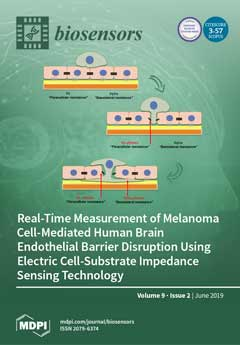Nanoparticles have been attracting growing interest for both their antioxidant and toxic effects. Their exact action on cells strongly depends on many factors, including experimental conditions, preparation, and solvents used, which have contributed to the confusion regarding their safety and possible health benefits.
[...] Read more.
Nanoparticles have been attracting growing interest for both their antioxidant and toxic effects. Their exact action on cells strongly depends on many factors, including experimental conditions, preparation, and solvents used, which have contributed to the confusion regarding their safety and possible health benefits. In order to clarify the biological effects of the most abundant fullerene C
60, its impact on the
Escherichia coli model has been studied. The main question was if C
60 would have any antioxidant influence on the cell and, if yes, whether and to which extent it would be concentration-dependent. An oxidative stress induced by adding hydrogen peroxide was measured with an
E. coli MG1655 pKatG-lux strain sensor, with its time evolution being recorded in the presence of fullerene C
60 suspensions of different concentrations. Optimal conditions for the fullerene C
60 solubilization in TWEEN 80 2% aqueous solution, together with resulting aggregate sizes, were determined. Results obtained for the bacterial model can be extrapolated on eukaryote mitochondria. The ability of C
60 to penetrate through biological membranes, conduct protons, and interact with free radicals is likely responsible for its protective effect detected for
E. coli. Thus, fullerene can be considered as a mitochondria-targeted antioxidant, worth further researching as a prospective component of novel medications.
Full article






